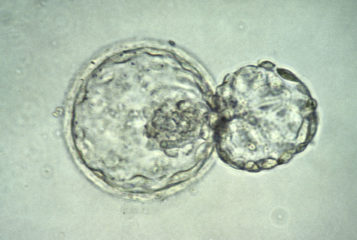UK and US researchers say they are close to identifying a 'cocktail' of protein that could convert adult cells into embryonic-like stem cells capable of growing into any type of body tissue. Scientists based at Edinburgh University have shown that a protein called 'Nanog' is key to this reprogramming process, while a team from Princeton University, New Jersey, has identified some of the proteins that work with Nanog. Both studies appear in the latest issue of Nature.
Following the cloning of Dolly the sheep, scientists have been searching for proteins involved in the 'reprogramming' of the genetic material of an adult cell, that help transform it into an embryonic state. Such research could eventually lead to an alternative to the use of embryonic stem cells (ES cells) in the search for new disease therapies. The Edinburgh team has now shown that a gene called Nanog - named after the mythical Celtic land of the ever-young, Tir nan Og - is the key to the reprogramming process.
The scientists first created mouse ES cells that produce four times the usual amount of Nanog protein. When they fused these cells with mouse nervous tissue cells, the hybrid cells transformed into ES cells 200 times more efficiently than normally happens in such fusion experiments. Team leader Austin Smith says that several other genes are probably involved, but that the identification of Nanog will hopefully speed up the search. The US study reported alongside the Nanog findings represents a significant step towards this goal, since the researchers have developed a new way to identify other reprogramming genes.
First, the team looked for mouse genes that are switched off when mouse ES cells transform into other types of cell. Then, they switched off each gene individually, in ES cells growing in the lab, to see whether the cells grew into other tissues. Their search resulted in the identification of Nanog, plus a few other genes, which make some of the proteins that work together to reprogramme an adult cell. Team leader Ihor Lemischka told Nature News that the challenge is now to identify the missing proteins involved in this process, work that the group has already started. 'Obviously that's where the field is really headed', he said, adding 'it's a terribly exciting time'.
Sources and References
-
How stem cells can turn back the biological clock
-
Stem cell superpowers exposed
-
A way around dilemmas of stem cells




Leave a Reply
You must be logged in to post a comment.